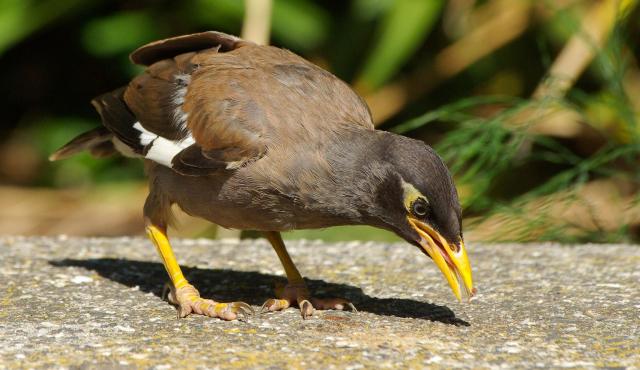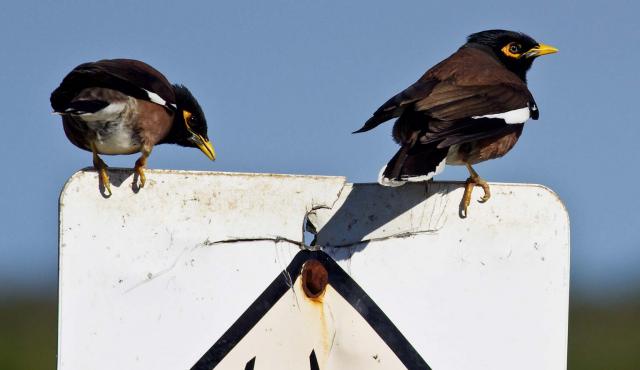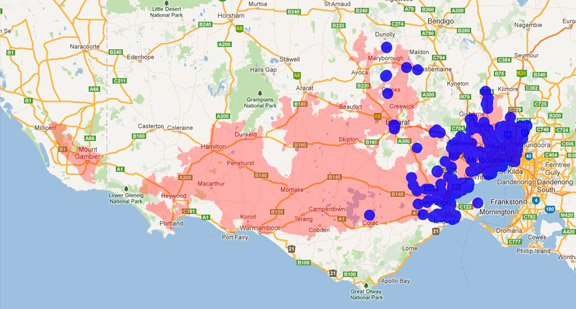A range of teacher professional learning programs will be developed to accompany the Biodiversity of the Western Volcanic Plains online outreach...



Common Myna
Sturnus tristis
Breeds October-March. Pairs mate for life choosing walls and ceilings of buildings or hollow trees or dense foliage for their bulky nests.
| Details | Description |
| Type | Bird |
| Group | Starlings and Mynas |
| Former Scientific Name | Acridotheres tristis |
| Other Common Names | Indian Myna |
| Identifying Characteristics | |
| Distinctive Markings | Distinctive brown bird with a yellow bill, legs and bare patch behind eye. |
| Diet | Omnivore. Will scavenge on invertebrates, fruit and vegetables, scraps and fledgling sparrows. |
| Habitat | Urban areas, agricultural areas near towns. |
| Native Status | Introduced |
| Sounds | Whistles and harsh rattling "wheeoo" "carrarrk, carrarrk" "tseit-tseit". |
| Taxonomy | |
| Phylum | Chordata |
| Class | Aves |
| Order | Passeriformes |
| Family | Sturnidae |
| Genus | Sturnus |
| Species | tristis |

Distribution maps indicate current and historic locations where species have been sighted.
Source: Atlas of Living Australia
| Conservation Status | |
| DEPI Advisory List | Not listed |
| FFG Act | Not listed |
| EPBC Act | Not listed |
The conservation status of species is listed within Victoria and Australia.
The Department of Environment and Primary Industry (DEPI) Advisory List consists of non-statutory advisory lists of rare or threatened flora and fauna within Victoria.
The Flora and Fauna Guarantee Act 1988 (FFG Act) lists threatened species in Victoria. Under the Act, an Action Statement is produced for each listed species.
The Environment Protection and Biodiversity Conservation Act 1999 (EPBC Act) is the Australian Government’s key piece of environmental legislation, listing nationally threatened native species and ecological communities.



